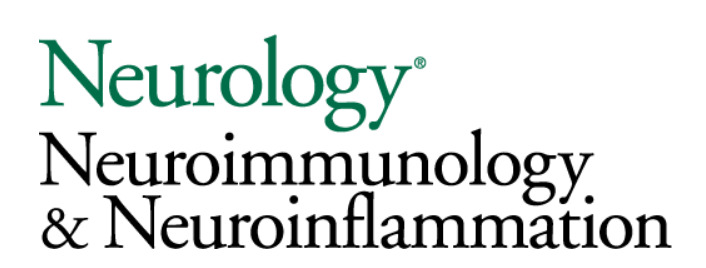
Neurology(R) Neuroimmunology & Neuroinflammation
2023 Aug 22;10(6):e200153.doi: 10.1212/NXI.0000000000200153. Print 2023 Nov.
Abstract
Objectives: Anti-IgLON5 disease (IgLON5-D) may present with a bulbar-onset motor neuron disease-like phenotype, mimicking bulbar-onset amyotrophic lateral sclerosis. Recognition of their distinctive clinical and paraclinical features may help for differential diagnosis. We report 2 cases of atypical trigeminal neuropathy in bulbar-onset IgLON5-D.
Methods: Trigeminal nerve involvement was assessed using comprehensive clinical, laboratory, electrophysiologic, and MRI workup.
Results: Both patients were referred for progressive dysphagia, sialorrhea, and hoarseness. They were treated with bilevel positive airway pressure for nocturnal hypoventilation. Patient 1 complained of continuous facial burning pain with allodynia, exacerbated by mastication and prolonged speech. Patient 2 reported no facial pain. Anti-IgLON5 autoantibodies (IgLON5-Abs) were positive in serum for both patients and CSF for patient 1. Cerebral MRI revealed bilateral T2 fluid-attenuated inversion recovery (FLAIR) hyperintensity and enlargement of trigeminal nerves without gadolinium enhancement in both patients. Needle myography showed fasciculations in masseter muscles. Blink-reflex study confirmed bilateral trigeminal neuropathy only in patient 2. Cortical laser-evoked potentials showed a bilateral small-fiber dysfunction in the trigeminal nerve ophthalmic branch in patient 1.
Discussion: In case of progressive atypical bulbar symptoms, the presence of a trigeminal neuropathy or trigeminal nerve abnormalities on MRI should encourage the testing of IgLON5-Abs in serum and CSF.
Copyright © 2023 The Author(s). Published by Wolters Kluwer Health, Inc. on behalf of the American Academy of Neurology.
- PMID: 37607754
- PMCID: PMC10584367
- DOI: 10.1212/NXI.0000000000200153
